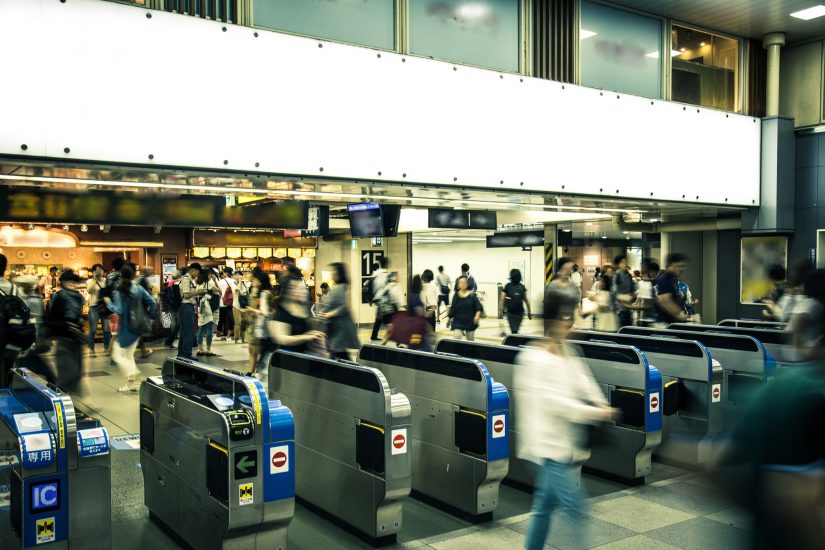For the latest technology, head to the station
Japan’s well-developed railway network plays a fundamental role in many areas of life, from urban districts to provincial towns. As many people use the railways, their age-range is wide, and railway operators provide equipment and services to suit a variety of customers
As a result, a railway station is a facility where a variety of people come and go. The presence of many travelers makes it a convenient place for testing and utilising new technologies. For example, at Takanawa Gateway Station, which opens on March 14, 2020, information robots and AI unmanned stores will be available on a trial basis. If you want to experience the latest technology in Japan, it’s a good idea to visit a railway station.
Ticket gates incorporating “Face Pass” technology
In my article introducing Takanawa Gateway Station I featured a ticket gate that can be entered by scanning a QR code. Osaka Metro, which operates the Osaka subway system, also plans to introduce next-generation ticket barriers which can recognize QR codes to open and close the gates. Moreover, Osaka Metro has a plan to install ticket barriers that even incorporate authentication by facial recognition.
Ticket gates incorporating facial authentication capture a person’s face with a camera as they enter the gate, and if that person is pre-registered, the gate will open and allow them to pass through. In other words, unlike current ticket gates, no time is taken inserting a ticket or touching an IC card or smartphone to a sensor; you can simply pass through.
Ticket gates incorporating QR code and facial authentication began practical trials at four Osaka Metro stations> in December 2019 and will continue until September 2020 . The ticket gates trialed at each station are made by different manufacturers and these are OMRON Social Systems, TAKAMISAWA CYBERNETICS, Toshiba Infrastructure Systems & Solutions, and Nippon Signal. Osaka Metro’s aim is to try out and compare the four different types of ticket gates.
Unfortunately, even if you want to try these ticket gates, this time only Osaka Metro employees can participate in this experiment. That said, Osaka Metro intends to introduce ticketless gates with facial authentication in all stations in fiscal year 2024. By the time EXPO 2025 OSAKA, KANSAI, JAPAN is held in 2025, anyone should be able to use them.
Ticket gates that eliminate the need to touch electronic tickets
East Japan Railway Company (JR East) is also developing a ticket gate that one can simply walk through. JR East has been researching a touchless ticket gate that wirelessly communicates with an electronic ticket for authentication in order to open and close the gate. If this technology were put into practical use, you could leave your ticket in your bag or pocket and still walk through the gate.
This ticket gate emits millimeter waves to communicate with an electronic ticket. Millimeter waves pass through cloth and other such materials, so there is no problem keeping an electronic ticket in your bag. There is no need to touch an IC card or smartphone electronic ticket to a sensor on the gate, making it easy to pass through. Moreover, touch-type ticket gates have sensors on the right side which is easy for right-handed people to use, but harder for left-handed people. If touching a ticket becomes unnecessary, it will be easier for everyone regardless of their dominant hand.
However, millimeter waves cannot be transmitted with low power, so electronic tickets that can be used with this ticket gate are limited to battery-powered devices such as smartphones. Currently popular electronic tickets such as Suica cannot be used, because they generate their signals from the ticket gates and are not equipped with a battery.
The development of these ticket gates seems to be progressing smoothly, and according to the Japan Times they will be introduced in two or three years’ time.








